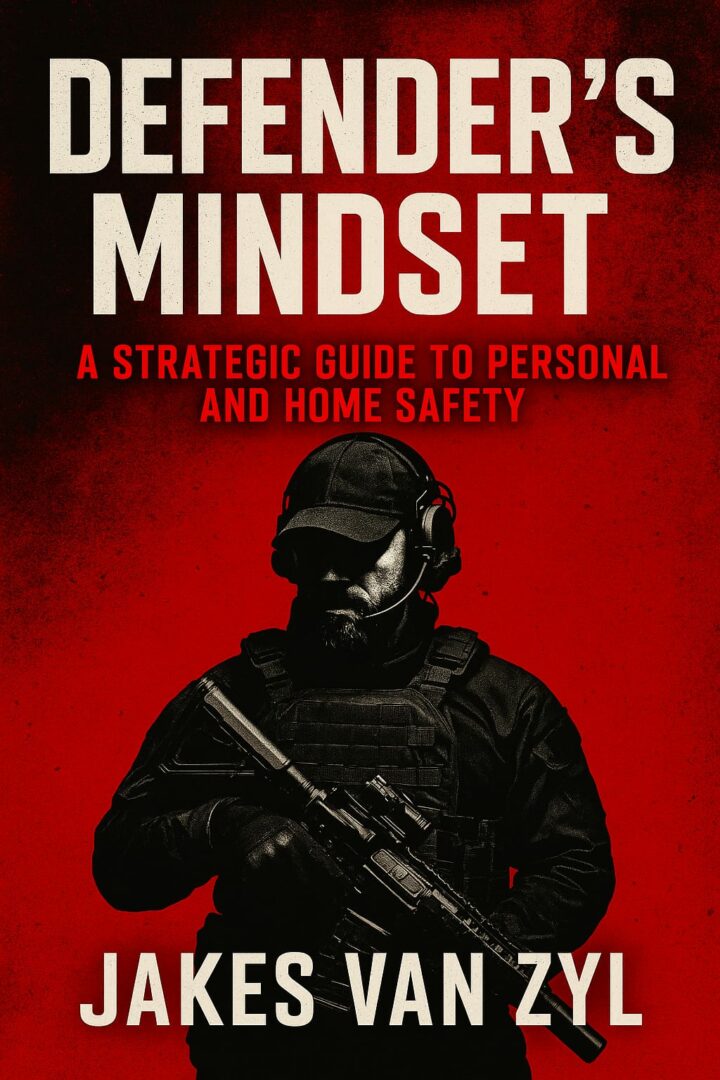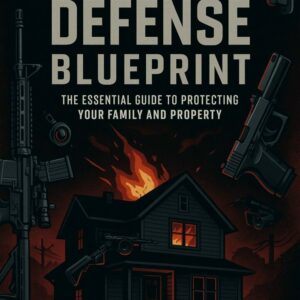Description
Objective of the Book:
To equip readers with the mindset, knowledge, and strategies
necessary for proactive personal and home safety, transforming
them into vigilant guardians of their environment.
2. Book Structure:
The book is structured into thematic sections that progressively
build the reader’s understanding of safety, from mindset to
practical applications, culminating in resilience and recovery.
– The Defender’s Mindset
– Calm Under Pressure
– Home Security Essentials
– Fortification Techniques
– Non-Lethal Defense Options
– Creating a Family Emergency Action Plan
– Counter Home Invasion Tactics
– Situational Awareness Training
– Integrating Protection Dogs
– Aftermath and Recovery
– Resources and Templates
3. Main Characters:
The Defender: A composite character representing the ideal
mindset of a proactive individual committed to personal and
home safety.
The Expert: A seasoned security professional who shares insights
and practical advice throughout the book.
The Family Member: Represents the importance of family
involvement in safety planning and emergency preparedness.
4. Central Themes:
Awareness: The foundation of personal safety, emphasizing the
need to be vigilant and perceptive of one’s surroundings.
Preparedness: The importance of planning and practicing safety
protocols to ensure readiness in emergencies.
Resilience: The ability to recover emotionally and legally after an
incident, highlighting the importance of support systems.
5. Writing Style:
The writing style should be engaging and approachable, using a
friendly tone that encourages readers to take action. It should
blend informative content with relatable anecdotes, ensuring
complex concepts are easily understood and actionable.
6. Reader Engagement Strategy:
To keep readers engaged from the first page to the last, the book
will employ a dynamic blend of storytelling and practical advice.
Each chapter will open with a relatable anecdote or a gripping
scenario that illustrates the importance of the topic at hand,
drawing readers into the narrative. Interactive elements, such as
reflection questions and actionable checklists, will encourage
readers to actively participate in their learning journey.
Additionally, the use of vivid imagery and relatable characters will
create an emotional connection, making the content not just
informative but also personally relevant and motivating.
7. Final Considerations:
This book is not just a manual; it’s a transformative guide that
empowers individuals to take charge of their safety and that of
their loved ones. By combining practical strategies with a
supportive narrative, it fosters a sense of community and shared
responsibility. The structured approach ensures that readers can
progressively build their knowledge and skills, making the journey
toward safety both achievable and rewarding.
8. Chapter structure and a brief summary of the content of
each chapter:
The Defender’s Mindset: This chapter delves into the psychological
aspects of being a defender, emphasizing the need to take charge
of one’s own safety and the role of awareness in preventing
threats.
Calm Under Pressure: Readers will learn strategies to stay calm
and focused during high-stress situations, enhancing their ability
to respond effectively to threats.
Home Security Essentials: This chapter guides readers through a
comprehensive home security audit, helping them pinpoint
weaknesses and prioritize improvements.
Fortification Techniques: Explores the use of lights, cameras, and
alarms, providing practical advice on how to fortify homes against
potential intrusions.
Non-Lethal Defense Options: An overview of non-lethal
self-defense options tailored to local laws, including safe storage
and quick access strategies.
Creating a Family Emergency Action Plan: Readers will learn how
to create a Family Emergency Action Plan, including designating
safe rooms and practicing drills to ensure readiness.
Counter Home Invasion Tactics: This chapter empowers readers
with tactics to respond to home invasions, focusing on barricading
and escape strategies.
Situational Awareness Training: Teaches readers how to enhance
their situational awareness, helping them identify and discourage
potential threats in everyday life.
Integrating Protection Dogs: Explores the benefits of trained
protection dogs in personal security plans, including handling
techniques to maximize their effectiveness.
Aftermath and Recovery: Guides readers through the necessary
steps for emotional recovery and legal documentation following
an incident, fostering resilience.
Resources and Templates: Provides appendices with templates,
equipment lists, and legal resources to help readers turn their
security awareness into actionable intelligence.











Reviews
There are no reviews yet.